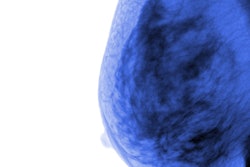Dear Women's Imaging Insider,
Traditional wire-guided localization of breast lesions is distressing for patients because they are left with a wire in the breast that protrudes from the chest and stays in place until the time of surgery. For this reason alone, the introduction of magnetic seeds is a welcome development.
Researchers from a leading London facility shared their experiences of this area at ECR 2021, which ended on 7 March. They confirmed that magnetic seeds are a feasible, cost-effective, and safe method of localizing breast lesions. Don't miss our report.
Whether Prof. Dr. Christiane Kuhl, PhD, is giving a virtual or a face-to-face presentation, you just know it's going to be clear, informative, and essential listening. This was certainly the case at last week's congress, when she gave a sparkling lecture about how to identify malignant lesions on breast MRI.
In another thought-provoking ECR talk, artificial intelligence (AI) researchers from the University of Southern California and software developer CureMetrix unveiled the results of a reader study involving nearly 800 mammograms. They found that an algorithm yielded significantly more consistent breast density assessments compared with seven experienced breast radiologists.
Meanwhile, a Dutch group who conducted a large study of nearly 2,500 interval cancer cases reported that a risk model integrating an AI cancer likelihood score with quantitative breast density analysis was able to identify more than half of all interval cancers on prior negative screening mammograms.
Also at ECR 2021, a major investigation by the Lancet Oncology Commission on Medical Imaging and Nuclear Medicine into global access to cancer diagnostics and treatment highlighted substantial differences in the availability of imaging between high- and low-income countries. Workforce inequities are a big factor behind the disparities.
Last but not least, automated breast positioning measurement represents a promising means to continuously monitor image quality and radiographer performance in an objective manner, according to Hannah Mary Gilroy, European innovation manager at Volpara Health, and colleagues.
This letter features only a few of the many articles posted over the recent weeks in the Women's Imaging Community. Please scroll through the full list of our coverage below.




















